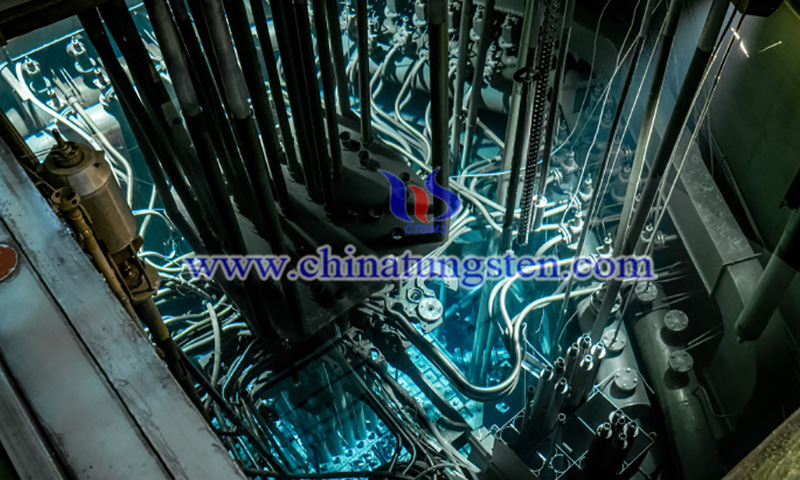Poland's MARIA Steps in to Maintain Mo-99 Supply
- Details
- Category: Tungsten's News
- Published on Thursday, 10 February 2022 13:05
Poland's only operating research reactor, the National Center for Nuclear Research (NCBJ) MARIA reactor in Świerk has rapidly rearrange its work program in response to a shortage of the medical isotope molybdenum-99 (Mo-99) due to the failure of the High Flux Reactor (HFR) in the Netherlands.
The Nuclear Research and Consulting Group (NRG) announced on January 21 that a "technical defect" was found in one of the cooling systems at Petten's HFR during an inspection. As a result, the reactor could not be restarted on Jan. 20 as planned.

The MARIA research reactor (Image Source: NCBJ)
NRG, one of the few suppliers of molybdenum in the world, has not yet been able to give an indication of when the reactor will be restarted. It has informed the Nuclear Medicine Europe so that supplies of the medical isotope can be maintained by other producers.
On Jan. 21, Poland's MARIA reactor quickly took over the production of Mo-99. NCBJ said that the reactor cores offer great production flexibility and that detailed core layout calculations were performed on-site and approved by the Polish nuclear regulator, all in a matter of hours.
The short response time was possible because the research reactor has been preparing to irradiate targets for Mo-99 production since 2010. Several cycles are conducted each year, and MARIA is prepared to increase its supply in the event of an unexpected shutdown within the main supplier.
Mo-99 is used 40 million times a year in diagnostic tests in hospitals around the world, including oncology, cardiology, and neurology. This involves injecting patients with a slightly radioactive fluid.

Globally, Mo-99 is produced in a limited number of research reactors. 45 MW of HFR - operated by NRG on behalf of the EU Joint Research Center - has long served the use of about 60 percent of Europe's and 30 percent of the world's medical radioactive sources. About 30,000 patients rely on medical isotopes from the Netherlands every day.
The high-throughput research reactor MARIA of Poland, located at the Świerk Research Center about 30 km southeast of Warsaw, is pool-type water and beryllium moderated reactor with graphite reflectors and pressurized channels containing concentric six-tube fuel element assemblies. This 30 MW reactor achieved its first criticality in December 1974. It is currently licensed to operate until 2025 but is expected to continue to operate until at least 2030.
The decay product of Mo-99, Tc-99m, is the primary isotope used in nuclear medicine for diagnostic imaging. Tc-99m is used to detect disease and to study the structure and function of organs. Tc-99m is particularly useful for nuclear medicine procedures because it can be chemically incorporated into small-molecule ligands and proteins, and when injected into the body, it can be concentrated in specific organs or tissues.
The isotope has a half-life of about 6 hours and emits 140 keV photons when it decays to Tc-99, a radioactive isotope with a half-life of about 214,000 years. This photon energy is well suited for effective detection by scintillation instruments such as gamma cameras. The data collected by the camera is analyzed to produce detailed structural and functional images.
| Molybdenum Supplier: Chinatungsten Online www.molybdenum.com.cn | Tel.: 86 592 5129696; Fax: 86 592 5129797;Email:sales@chinatungsten.com |
| Tungsten News & Prices, 3G Version: http://3g.chinatungsten.com | Molybdenum News & Molybdenum Price: http://news.molybdenum.com.cn |



 sales@chinatungsten.com
sales@chinatungsten.com